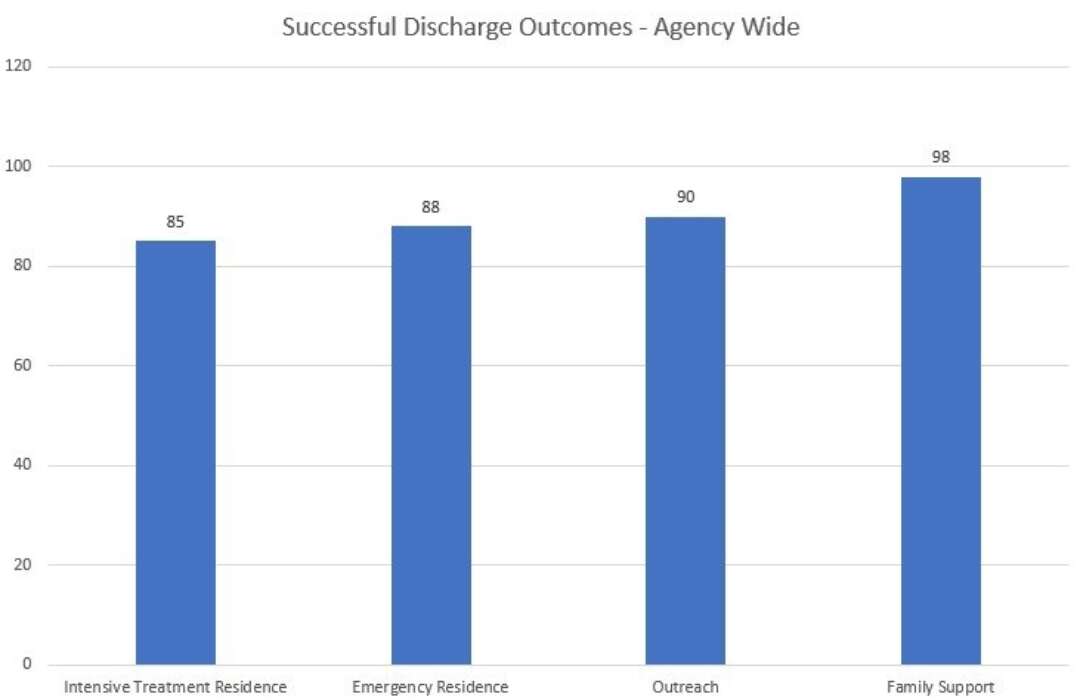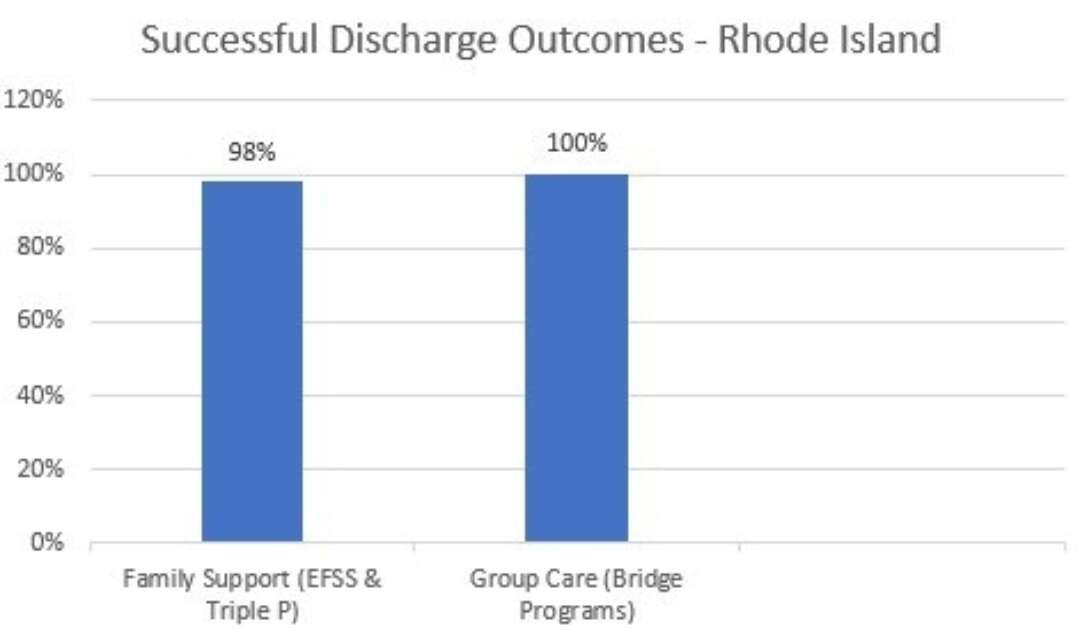About Us
Agency-Wide

Key's commitment to quality has led to a high percentage of successful outcomes for youth and families served through Key's various service models. Key measures these outcomes as the percentage of successful discharges from each of its programs. A successful discharge in community residential programs or in a non-residential program occurs when the youth and/or family has met their treatment plan goals. For Key's shelter programs, a successful discharge is measured by the percentage of youth successfully completing their temporary placement.
For the fiscal year FY 2024 (7/1/2023 - 6/30/2024), Key discharged 1,071 youth and families in a variety of programs. The gender identity ages 5 and above were fifty percent (50%) male, 46% female, 1% transgender, 1% non-binary, 1% other, and 1% under 5 years old. Sixty-nine percent (69%) of the youth served agency-wide were 15 years old and older and 31% of the youth were 14 and younger. Of the youth and families served across the agency, 43% were Caucasian, 27% Latino/Hispanic, 13% Black, 1% Asian, 14% Bi-Racial/Multi-Racial, and 2% other.
Key had successful discharge outcomes of 88% in its emergency residence programs, 98% in its family support programs, 85% in its intensive treatment residence programs, and 90% in its outreach and tracking programs.
Rhode Island

For the fiscal year FY 2024 (7/1/2023 - 6/30/2024), Rhode Island Key discharged 158 youth and families from a variety of programs. The gender identity ages 5 and above were forty-nine percent (49%) male, 43% female, 1% transgender, 1% other, and 6% under 5 years old. Thirty-one percent (31%) of youth served were 15 and older and 69% were 14 and younger. Of the youth and families served 41% were Caucasian, 16% Latino/Hispanic, 11% Black, 30% Bi-Racial/Multi-Racial, and 2% other.
Rhode Island had successful discharge outcomes of 98% in its Enhanced Family Support Services (EFSS) and Triple P programs and 100% in its Bridge to Independence program.

